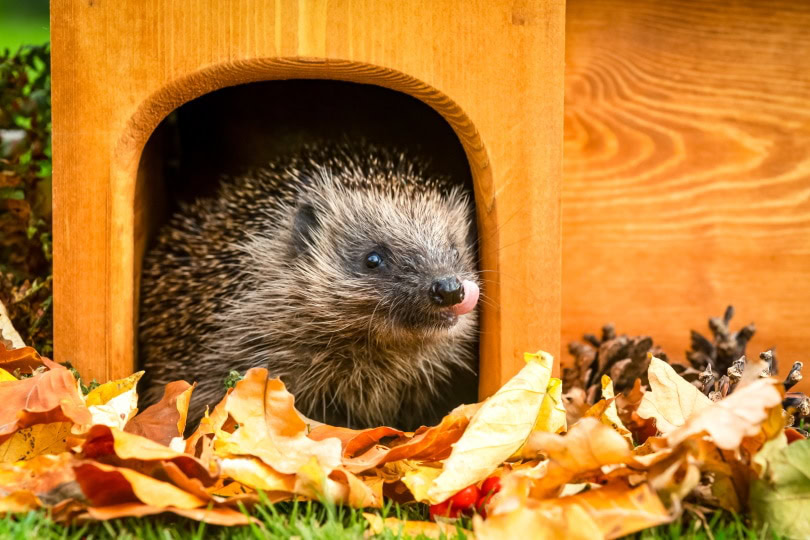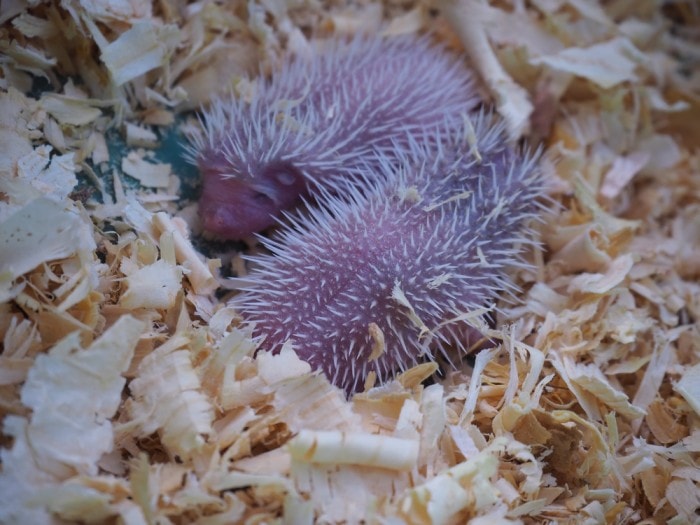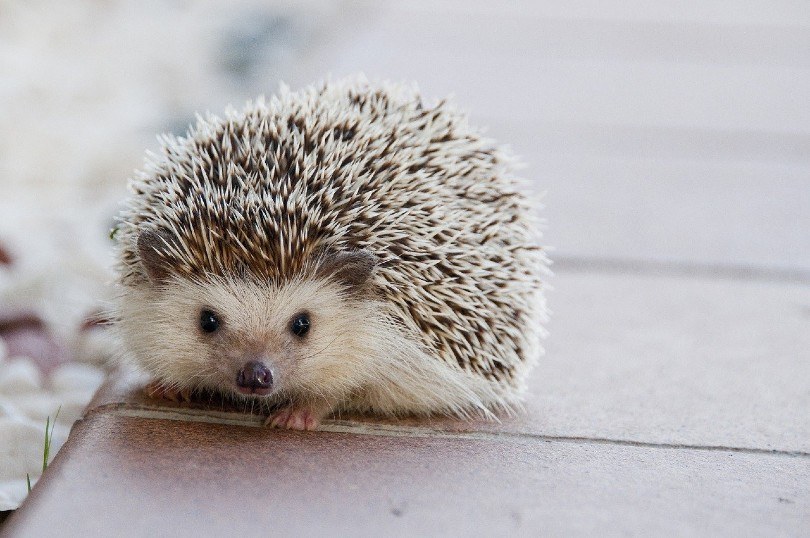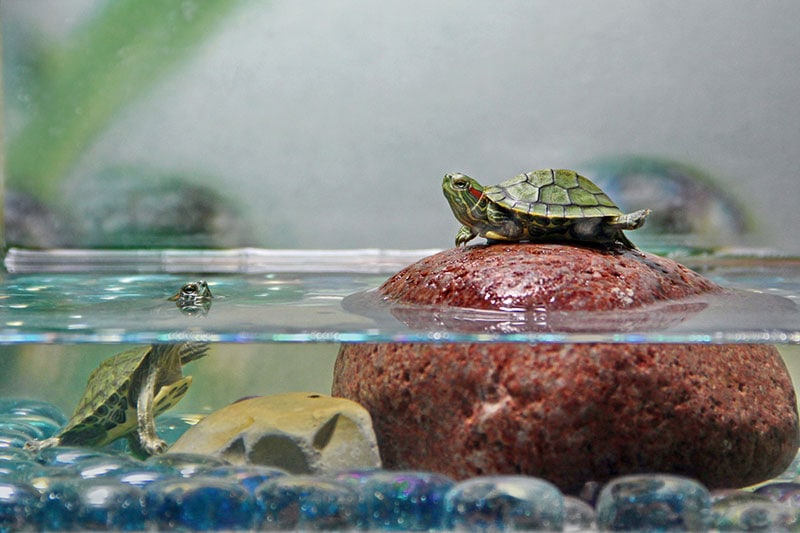Click to Skip Ahead
Hedgehogs are cute and interesting exotic pets that have gained in popularity over the years. It’s not common for these animals to get spayed or neutered, so there’s a chance that your pet hedgehog can get pregnant. The gestation period for a hedgehog is incredibly short compared to that of a human, lasting between 30 and 40 days.
If you suspect that your hedgehog may be pregnant, you can look for signs to support your suspicions. Here’s all you need to know about hedgehog pregnancies.

Signs That a Hedgehog May Be Pregnant
The ideal age for hedgehogs to mate is during their second year of life. However, some hedgehogs can be sexually mature as young as 5 months old.1
Pregnant hedgehogs will display certain types of behaviors, though these can also be indicators of other underlying health concerns. So, the best way to determine if your pet is pregnant is to consult with your veterinarian.
If you see your female hedgehog engaging in these behaviors, you might want to consider scheduling a vet appointment to determine if she is pregnant:
- Increased appetite
- Weight gain
- Changes in eating routine
- Nest building

How Long Is a Hedgehog’s Pregnancy?

Breeding season for hedgehogs typically starts in the early spring and ends in early summer. So, you can start to see baby hoglets appear in mid-summer. On average, female hedgehogs give birth to litters of about four to five hoglets. However, litters can be as big as seven hoglets.
Hedgehogs can give birth to about two to three litters per season, but it’s best for them to have just one litter per year. This ensures that the mother has plenty of time to recover and take adequate care of her young.
Do Hedgehogs Lay Eggs?
Hedgehogs may look similar to echidnas, but they’re different species. Echidnas belong to the Tachyglossidae family and are one of four egg-laying mammal species.
In contrast, hedgehogs belong to the Erinaceinae family and don’t lay eggs. Instead, they have live births.
How to Prepare for Hedgehog Birth
Hedgehogs need a lot of privacy when they’re ready to give birth. So, make sure your hedgehog’s enclosure is in a quiet and peaceful spot with no disruptions. You can provide more nesting material so your hedgehog can prepare a cozy nest for her litter.
A female hedgehog will start to exhibit different behaviors when she’s ready to give birth. You may notice her licking her genital area and having labored breathing. She might also lie on her side or choose to stand with her back legs apart. Her body might shake if she’s having contractions.
She can give birth to a hoglet within 2 minutes, but the process can also last for hours. You may also miss your hedgehog giving birth because these animals tend to birth in the middle of the night.
Once all the hoglets are born, the mother will eat the placenta and clean up her babies.

What to Do After a Hedgehog Gives Birth

The best thing you can do is leave your hedgehog alone for about a week. Hedgehog mothers can easily feel stressed, which can lead to them rejecting their babies. There are even some cases of them eating or biting their young. So, make sure to leave yours alone to bond, and avoid touching or handling any newborn hoglets.
After about a week, you can slowly re-introduce yourself to your hedgehog. Be extra mindful of being quiet, gentle, and slow with your actions and movements. You want to be as non-threatening as possible.
You can do minimal, noninvasive spot cleaning of your hedgehog’s enclosure. However, extreme cleaning shouldn’t be done during this time because it can feel disruptive and stressful for your pet.
Baby hedgehogs start to get ready to leave their nest at about 4 weeks old. Once they reach 7 weeks old, they will no longer need their mother and can live independently.
- Next on your reading list: Why Do Hedgehogs Burrow?

Final Thoughts
Hedgehog pregnancies last for a little over a month. The whole rearing process takes just a few weeks and can fly by rather quickly. The best way to care for pregnant hedgehogs is to provide them with ample nesting material, food, and space. They tend to do well on their own, so it is rare that they need any intervention.
Featured Image Credit: Amaya Eguizábal, Pixabay










